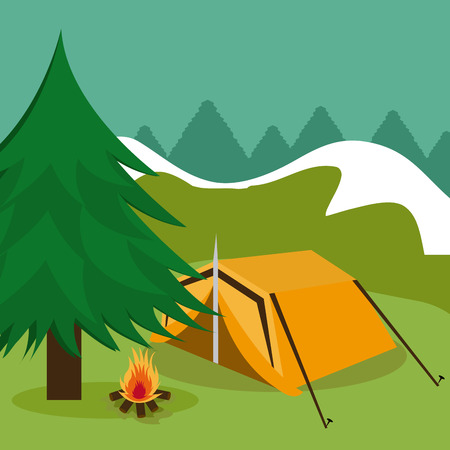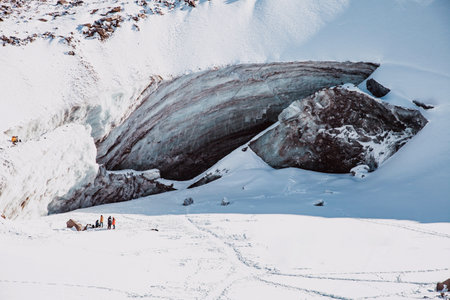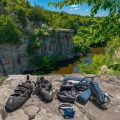1. Understanding the Importance of Fire in Survival
If you ever find yourself lost or stranded outdoors, building a fire can be a real game-changer. Out in the wild, especially when conditions get tough, fire isn’t just about staying warm—it’s about survival. Let’s dig into why fire is so crucial and look at the kinds of situations where having a reliable flame can make all the difference between being safe and getting into trouble.
Why Is Fire a Big Deal When Youre Out There?
Fire is one of those survival basics that covers a lot of ground. Here’s what it brings to the table:
| Benefit | Why It Matters in Survival |
|---|---|
| Warmth | Prevents hypothermia, especially in cold or wet weather. |
| Cooking Food | Makes wild foods safer to eat and easier to digest. |
| Purifying Water | Kills bacteria and parasites by boiling water—essential if your only source is a stream or pond. |
| Signaling for Help | Smoke and flames can attract rescuers’ attention from miles away. |
| Protection from Wildlife | Most animals steer clear of fire, so it helps keep you safe at night. |
| Mental Comfort | The glow of a campfire calms nerves and gives a sense of safety when you’re alone or stressed. |
Real-World Scenarios: When Fire Means Survival vs. Danger
Certain situations take the importance of fire up a notch. Picture these:
- You’re stuck after dark in the backcountry: Temperatures drop fast, and without fire, hypothermia becomes a real threat.
- Your clothes are soaked from rain or snow: Only fire can dry your gear before you lose too much body heat.
- You need to purify questionable water: Boiling over an open flame could prevent serious illness.
- You want to signal search teams: A smoky blaze is way more visible than shouting or waving your arms.
- You hear animals rustling nearby at night: Firelight acts as a natural barrier against curious critters.
Comfort vs. Danger: The Role of Fire in Survival Situations
| With Fire | Without Fire |
|---|---|
| Warm, dry shelter; morale boost; safe water and food; better chance of rescue; protection from wildlife. | Chilling cold; risk of dehydration or illness from unsafe water; increased danger from animals; feeling isolated or panicked; harder for rescuers to spot you. |
The Bottom Line on Why Fire Matters in Survival Mode
No matter how prepared you think you are, nature can throw curveballs—rain, wind, snow, even surprise cold snaps. Having the know-how to build an effective survival fire isn’t just handy; it could be what gets you home safely. In the following sections, we’ll break down exactly how to make that happen when conditions aren’t on your side.
2. Choosing the Right Location and Preparation
Picking the Perfect Spot for Your Fire
When you’re out in the wild, choosing where to build your fire is just as important as how you build it. You want a spot that’s not only safe but also helps your fire burn well—even if the weather’s working against you. Here are some key things to consider:
| Factor | Why It Matters | What to Look For |
|---|---|---|
| Wind Direction | Strong winds can blow sparks, make your fire hard to control, or put it out. | Pick a spot that’s sheltered from the wind, like behind a rock or hill. Face your fire away from where the wind is blowing. |
| Shelter | Shelter helps protect your fire from rain, snow, and wind. | Look for natural cover like overhanging rocks or dense trees (but not directly under low branches). |
| Distance from Flammable Materials | You want to avoid accidental wildfires. | Clear away dry grass, leaves, and sticks. Make sure there are no overhanging branches above your fire site. |
| Proximity to Water (if possible) | If things go south, you’ll want water nearby to douse the flames fast. | Set up near a water source, but not so close that you risk contaminating it with ash or debris. |
| Environmental Impact | Leave no trace and protect nature for others. | Aim to use existing fire rings or bare ground whenever you can. Don’t build new fire pits if it’s not necessary. |
Prepping Your Fire Area
No matter how good your spot is, prepping your area makes all the difference—especially when conditions are tough (like wet ground or snow). Here’s what to do:
Step-by-Step Prep Checklist:
- Clear a Circle: Remove all leaves, twigs, and flammable stuff in at least a 5-foot circle around your planned fire site.
- Create a Barrier: If you have them, surround your fire spot with rocks. This keeps embers contained and adds protection from wind gusts.
- Add a Base Layer: If the ground is wet or snowy, lay down a platform of dry sticks or bark. This keeps your tinder off the cold ground so it lights easier.
- Gather All Materials First: Before you strike a match, make sure you have everything—tinder, kindling, and larger fuel—ready to go. This avoids scrambling for more wood while your first flames die out.
- Think Safety: Always keep water or dirt nearby so you can quickly put out the fire if needed.
Quick Tips for Tough Conditions:
- If it’s raining or snowing, look for dry tinder under logs or inside standing dead trees—they stay drier than stuff on the ground.
- If strong winds are unavoidable, dig a small pit for your fire to help shield it and keep flames steady.
- Avoid valleys where cold air pools—it’s harder to keep fires going there. Higher ground with shelter is usually better.
The right location and prep don’t just make building a survival fire easier—they help keep everyone safe and minimize your impact on the outdoors. With these steps dialed in, you’re ready to move on to actually getting that fire started!

3. Gathering and Choosing Materials
Finding the right fire-making materials is the backbone of any survival fire, especially when conditions get tough—think heavy rain, deep snow, or high humidity. Let’s break down how to source tinder, kindling, and fuel in different American landscapes, plus some handy tips for identifying usable stuff even when it looks hopelessly wet.
Tinder: Your Fire’s Spark
Tinder catches your first spark or flame and gets things started. Dryness is key, but sometimes you have to get creative. Here are some top picks by biome:
| Biome | Best Natural Tinder | Tips for Finding/Using When Wet |
|---|---|---|
| Eastern Forests (Appalachians, Ozarks) | Birch bark, dry leaves, pine needles, cattail fluff | Peel inner layers of birch bark; look under logs for drier material; stuff pockets with found tinder to dry as you hike |
| Western Mountains (Rockies, Cascades) | Pine resin (pitch), dry grass, juniper bark, sagebrush fibers | Pine resin ignites even when wet; check the underside of fallen logs for dry bark |
| Desert Southwest | Cottonwood bark shavings, dried cactus fibers, creosote bush twigs | Dried grass bundles tucked under rocks often stay drier than exposed areas |
| Northern Boreal/Alaska | Spruce needles, old man’s beard lichen, birch bark | Look for dead standing trees for the driest bark; use knife to shave inner dry wood if outer layer is frozen/wet |
| Urban/Suburban | Cotton balls (from first aid kits), dryer lint, paper scraps | Store-bought options like petroleum jelly-soaked cotton balls work even in rain or snow |
Kindling: Feeding the Flame
Once you’ve got tinder lit, kindling bridges the gap to bigger fuel. Kindling should be finger-thick sticks or chips—dead twigs snapped from standing branches are best. Avoid wood directly on the ground (usually wet or rotten). In snowy or rainy places, snap branches off trees that aren’t touching the snow or ground—they’re often surprisingly dry inside.
Quick Tip: Testing Kindling Dryness
Bend a twig—if it snaps cleanly, it’s dry enough. If it bends or feels spongy, keep looking.
Main Fuel: Keeping It Going All Night
Your main fuel consists of thicker branches and logs. The best sources depend on where you are:
| Biome | Main Fuel Choices | How to Identify Usable Fuel When Wet/Snowy |
|---|---|---|
| Pine forests (East/West) | Pine logs and deadfall branches (look for grayish “standing dead” trees) | Split logs with a hatchet—the inner wood is often dry; avoid green/freshly fallen limbs which smoke heavily and burn poorly |
| Hardwood forests (Midwest/East) | Oak, maple branches; beech and hickory burn hot and long | Bark sheds water—split open bigger pieces to find dry interior wood; stack near fire to pre-dry future fuel |
| Sagebrush/desert scrublands | Sagebrush stems, mesquite wood (burns hot), dried yucca stalks | Dried branches snapped from above ground stay drier than those lying on sandy soil; avoid rotted punky wood—it smolders but won’t give good heat/flame |
Found Materials: Urban & Roadside Scenarios
If you’re in a less wild environment (roadside breakdowns, city parks), look for:
- Pallet wood (untreated only!)—splits easily into kindling-size strips
- Cardboard—makes decent tinder when shredded
- Packed newspaper—twisted into tight “logs” as backup fuel
- Dryer lint or cotton pads from first aid kits
- Candles or waxed paper as emergency fire starters
Bonus: Working with Wet Materials in Any Biome
- If everything seems soaked, split larger sticks/logs lengthwise to expose a dry core.
- Suspend collected kindling/fuel above your fire base to pre-dry using radiant heat.
- Pocket small amounts of tinder as soon as you start searching so body heat can help dry them out while you prep other materials.
- Avoid punky/spongy wood—it absorbs water like a sponge and rarely dries out fast enough.
- If snow-covered, dig down to find buried deadfall under tree canopies—often surprisingly dry.
The key is not just what you collect but how you process it. Shave off wet outer layers with a knife or hatchet until you hit dry stuff underneath. Even in rough weather or unfamiliar territory across America’s diverse biomes, there’s almost always something that’ll catch a spark—you just need to know where and how to look.
4. Fire-Starting Methods That Work When the Going Gets Tough
Understanding Your Options When Conditions Are Rough
When you’re out in the wild—especially across diverse American landscapes—you’ll quickly learn that not all fire-starting methods are created equal. Sometimes it’s rainy, sometimes it’s icy, and sometimes you’re just plain unlucky with wet tinder. Here’s a hands-on breakdown of reliable ways to get your survival fire going even when Mother Nature throws a curveball.
Reliable Fire-Starting Techniques
| Method | How It Works | Best For | Pro Tips |
|---|---|---|---|
| Ferro Rods (Ferrocerium) | Scrape rod with steel to shower sparks onto tinder. | Damp, cold, or windy conditions; works even when wet. | Pair with cotton balls smeared in petroleum jelly or fatwood shavings for best results. |
| Bic Lighter (or similar) | Create a flame at the flick of your thumb. | Quickest option; easy to use but can fail if wet or too cold. | Keep inside pocket for warmth; wrap in duct tape as emergency tinder and extra grip. |
| Chemical Fire Starters | Ignite special tabs or sticks that burn hot and long. | Soggy environments, snow, emergencies where time matters. | Magnesium blocks work great; store in waterproof baggies. |
| Stormproof Matches | Strike and light even in wind or rain; burn hotter than regular matches. | Windy, rainy American backcountry trips, coastal hikes. | Kneel down and shield with your body for best success. |
| Battery & Steel Wool Hack | Touch 9V battery terminals to fine steel wool for instant ignition. | Desperate situations; common household items repurposed in the wild. | Tear steel wool thin for more surface area; keep away from kids when stored at home! |
Troubleshooting When Everything’s Damp or Freezing
Pretreat Your Tinder: The Pocket Trick
Keep your go-to tinder (like dryer lint, waxed wood shavings, or commercial fire tabs) in a ziplock bag inside your inner jacket pocket. This way, your body heat keeps it dry and ready no matter how nasty the weather gets outside.
Build a Base First: No Contact with Wet Ground
If the forest floor is soaked or covered in snow, lay down a platform of bark or dry sticks before stacking your tinder. This keeps moisture from wicking up into your fire-starting materials—a must-do hack whether you’re deep in Appalachia or up in the Rockies.
Shelter Your Flame: American Field Ingenuity
No matter which method you use, always shield your fire from wind and rain. In a pinch, prop up your backpack as a windbreak, or dig a shallow trench if you’re on flat ground. Think like an American pioneer—adapt with what you have on hand!
Quick Reference Table: What to Try First?
| If it’s… | Your Best Bet is… |
|---|---|
| Damp and windy? | Stormproof matches or ferro rods with waxed tinder. |
| Bitterly cold? | Bic lighter kept warm in your pocket; ferro rod as backup. |
| You forgot everything else? | Battery and steel wool hack—plus scavenged natural tinder like birch bark. |
| You need fire ASAP? | Chemical fire starter tab + ferro rod combo. |
Final Gear Note: Always Double Up!
The most seasoned American outdoors folks will tell you: redundancy saves lives. Carry at least two different fire-starting methods and stash them separately. That way, if one fails—or freezes solid—you’ve got another shot at staying warm and safe out there.
5. Maintaining and Utilizing Your Fire
Keeping Your Fire Burning Safely
Once your fire is lit, the real challenge begins: keeping it going, especially when conditions are tough. Start by adding small sticks and gradually work up to larger logs. Avoid smothering the flames—airflow is key. Arrange your wood in a teepee or log cabin style to encourage oxygen flow. In windy weather, use rocks or a natural windbreak to shield your fire, but always leave enough space for air to circulate.
Tips for Safe Fire Maintenance
| Tip | Why It Matters |
|---|---|
| Keep extra dry wood nearby | Quickly add fuel without leaving your fire unattended |
| Never leave the fire alone | Unattended fires can spread quickly, especially in dry conditions |
| Monitor sparks and embers | Prevent accidental wildfires by controlling stray embers |
| Build a ring of rocks if possible | Keeps the fire contained and protects from wind gusts |
Using Your Fire for Survival Needs
Staying Warm
Sit close enough to feel the heat but far enough to avoid burns or melted gear. If you have a blanket or emergency bivvy, use it to trap warmth from the fire. Rotate yourself periodically to warm all sides evenly.
Cooking Over Your Fire
If you have a metal container, set it on a flat rock near the coals—not directly in the flames—for controlled heat. Skewer food on sticks or improvise a grill with green branches. Always ensure your food is cooked thoroughly to avoid illness.
| Method | Description |
|---|---|
| Boiling water | Place container near coals; boil at least 1 minute (longer at high elevations) |
| Roasting on sticks | Spear food (like hot dogs or fish) and hold over steady coals for even cooking |
| Baking in ashes | Bury root vegetables or wrapped food in hot ashes for slow cooking |
Signaling for Help
Your fire can be a lifesaver when signaling rescuers. Three short bursts of smoke or flame are widely recognized as an SOS signal in North America. Add green vegetation carefully to produce thick white smoke during daylight hours. At night, keep flames bright and visible by adding dry wood.
Fire Safety: Protecting Yourself and Nature
- Create a safety zone: Clear away leaves, needles, and flammable debris within 10 feet of your fire.
- Have water or dirt ready: Be prepared to extinguish your fire at any moment—never risk letting it get out of control.
- Avoid burning plastics or trash: This produces toxic fumes and pollutes the environment.
- Drown, stir, and feel: When youre done, pour water over the fire, stir the ashes, and make sure everything is cool to the touch before leaving.
- Follow local regulations: Some areas have strict rules about open fires due to wildfire risks—know before you go.
An effective survival fire requires constant attention, smart use, and respect for nature. Stay alert, stay safe, and let your fire serve you well until help arrives or youre ready to move on.
6. Troubleshooting and Adaptation in Harsh Conditions
Understanding Local Weather Challenges
Building a survival fire in the U.S. means dealing with unpredictable weather—from Pacific Northwest rain to Midwest snow or those gusty Great Plains winds. Let’s break down how to adapt your fire-building technique when nature refuses to cooperate.
Common Fire-Building Problems and Solutions
| Problem | What Happens | Practical Fix |
|---|---|---|
| High Winds | Your flame keeps blowing out, tinder scatters everywhere. | Build your fire in a natural windbreak (like behind a log or rock). Use your backpack as a temporary shield while you light it. Consider digging a small trench fire or building a Dakota fire hole for extra protection. |
| Rain & Wet Ground | Tinder is damp, matches won’t catch, kindling smolders but doesn’t ignite. | Gather dry materials from under logs or inside dead trees. Feather sticks with your knife to expose dry wood. Lay down a base of bark or rocks to keep your fire off the wet ground. |
| Snow & Frozen Ground | The ground melts and turns to slush; your fire sinks or goes out fast. | Use a platform of green logs or flat stones as a base. Keep your tinder and matches inside your jacket until needed so they stay warm and dry. |
| Lack of Resources | No obvious dry tinder or kindling around, especially after heavy rain or snow. | Cotton balls with petroleum jelly, dryer lint, or even chips/crackers (high oil content!) work as emergency tinder. Always carry some compact fire starters in your kit—think local: fatwood from pine stumps is common in many American forests. |
Adapting Your Technique on the Fly
Shelter Your Fire
If you can’t find natural cover, rig up an improvised tarp shelter or lean-to with whatever’s at hand—even a rain jacket draped over sticks helps. The main goal is to keep wind and precipitation off your fire long enough for it to get established.
Choose the Right Fire Structure for the Situation
| Condition | Recommended Structure |
|---|---|
| Windy | Dakota fire hole, lean-to against wind direction, log-cabin style for stability. |
| Wet/Rainy | Teepee structure—gets flames up quickly; platform base stops water soaking in. |
| Snow/Icy Ground | Pyramid stack on log/stone base; plenty of kindling to get heat up fast. |
Stay Flexible and Resourceful
No two emergencies are ever the same. In American backcountry conditions, improvising is part of the process. Always scan your environment for what you have—not just what you wish you had—and adjust as needed. Even if all you have is a single match and damp leaves, thinking creatively can make all the difference between warmth and misery.


